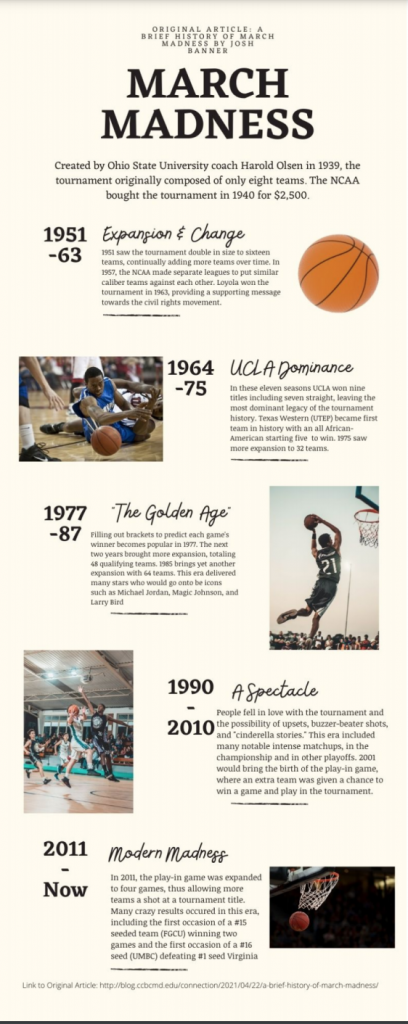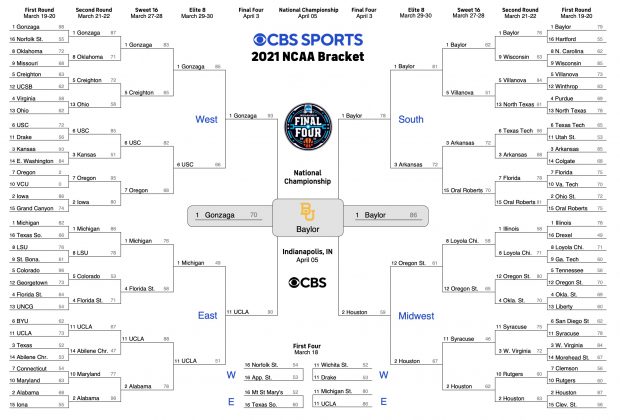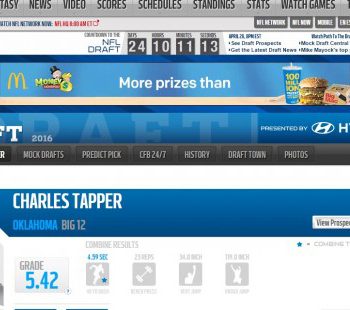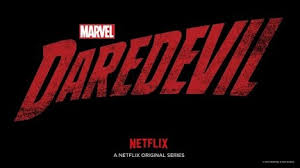Josh Banner
Earlier this month (April 5) a new college basketball champion was crowned as the Baylor Bears were able to defeat the once undefeated Gonzaga Bulldogs. The game served to close a triumphant return to prominence, not only by Baylor, but by The NCAA as a whole.
One year removed from having to cancel their multi-billion-dollar tournament, there were questions as to whether the event would even happen this year. Those questions were answered as one of the biggest sporting events in America returned to form and began its 82nd installment on March 18, 2021.
“College hoops is something I thoroughly enjoy watching year after year,” one fan, Matt Miles, Said. “March Madness is one of the greatest sporting events out there in my opinion. The buzzer beaters, “the Cinderella’s,” the atmosphere, it just keeps performing.”
There is nothing quite like March Madness, but it has not always been the phenomenon it is today.
ORIGINS (1939-1950)
When Ohio State coach, Harold Olsen, first created the idea in 1939, many teams and players declined the invitation due to not wanting it to conflict with their classes. Back then, the tournament was only composed of 8 teams. Oregon beat Ohio State in the first ever tournament championship, but they would not return to The Final Four for another 78 years.

Infographic by MCOM 111 student, Ely Shilling
The next year, The NCAA bought the tournament from the National Association of Basketball Coaches for an approximate sum of $2,500. This has turned out to be one of the biggest bargains in history, as The NCAA has turned the tournament into providing a revenue of more than a billion dollars each year.
The 1944 tournament turned out to be a very interesting one in NCAA history. Due to an automobile accident which severely injured several players and killed a coaching aide, Arkansas had to withdraw from the tournament. Utah, who had already played in the NIT, took their spot and ended up winning the championship as what is sometimes called the first “Cinderella” story.
In the late 1940s, The NCAA faced major controversy as many of their best schools and players were found attempting to fix games for gamblers, otherwise known as “point shaving.” Among those teams were CCNY, which after winning the championship in 1950, would face a decade of subpar seasons before dropping divisions.
EXPANSION (1951-1957)
In 1951, the tournament doubled in size, now featuring 16 teams from the original 8. The next year, The NCAA brought forth the idea where the remaining 4 teams would face off in the same area that they would play in the championship game. This would ultimately be given the name “The Final Four” several years later.
Over the next few years, the tournament would add even more teams to the point where some teams would get byes and some teams would not depending on their region and rank. This would become the new format until 1969 when the tournament would stick to 25 teams.
In 1957, the NCAA divided colleges into two divisions based off skill, which sparked two separate tournaments. The bigger, more competitive programs were placed in the University Division, and the smaller, less competitive programs were placed in the College Division. In the 70’s, these groups were later renamed Divisions I, II, and III (I being most competitive, III being least competitive). The more competitive nature made for some intense games, including a triple-overtime championship game where North Carolina was able to narrowly defeat Wilt Chamberlain and Kansas.
THE GAME OF CHANGE (1963)
During this time the tournament was growing in popularity. The 1963 showing was monumental as it hosted what is known as “The Game of Change.” The 60’s were a time for much civil unrest, and it was no different in basketball. College sports was still mostly dominated by white-athletes, and some colleges, including Mississippi State, were forbidden from playing colleges that were not also all-white.
Ross Barnett, the Governor of Mississippi, is noted for saying he was a strong supporter of racial segregation. Yet, at the time of the civil rights movement, many began to question whether that was okay. Mississippi State accepted the invite and participated in the tournament, where they played Loyola, led by several African American players, despite protests from the governor. Loyola won the game and went on to win the tournament.
UCLA’S DOMINANCE (1964-1975)
Before 1964, no team had truly dominated the tournament. Some teams might have won two in a row, but there was never a team that was as good for as long of a period as UCLA was from 1964 to 1975. In those 11 seasons, UCLA won the championship 9 times.
The 1966 tournament is known as one of the most notable tournaments around this time. For one, UCLA did not win, but rather Texas Western (today known as UTEP). It was the first time in NCAA Championship history that a starting 5 was composed of all African American players, where they were able to defeat the all-white starting 5 of Kentucky.
This notable game was adapted into a movie titled “Glory Road” in 2006. To this day, this game stands as an important moment in NCAA Tournament history.
Afterwards, the UCLA Bruins would win a record of 7 straight championships, leading some of the greatest teams in college basketball history. That streak came to an end in the 1974 Final Four, when in a nail-biting, double-overtime fixture, NC State was able to finally defeat UCLA, 80-77. NC State went on to win the championship.
In 1975, the NCAA expanded the tournament to 32 teams. The expanded bracket did not matter much, though, as UCLA won yet again. It would be their last win in a long time, however.
BIRTH OF A NEW ERA “THE GOLDEN AGE” (1977-1987)
One of the biggest staples of March Madness has been the bracket challenges. Each year, millions of brackets are filled out, hoping to be the first perfect bracket. To this date, nobody has ever had a perfect bracket, as the odds of doing so are in the quintillions. While nobody knows for certain where this tradition has come from, some speculate that the origin of this tradition happened in a Staten Island Bar in 1977. The popularity of doing so has grown tremendously, and to this day serves as one of the greatest traditions of college basketball.
In 1979, the tournament grew to include 40 teams, and the next season, it grew to 48. Over the next few years, the tournament would continue to grow until 1985, when the tournament finally landed on its 64-team format.
1979 was also known as the year that brought forth a new era of popularity towards basketball thanks in large part to the rivalry between Magic Johnson and Larry Bird. The two met in the championship in one of the highest-rated college basketball games of all time. Magic’s Michigan State won the championship over Bird’s Indiana State. The two would leave the next year and usher in a renaissance for The NBA.
In 1982, Brett Musberger used the term “March Madness” during coverage of the tournament. The term had been used before, but the name did not stick until much later. 1982 also held one of the more memorable championship games, which saw Michael Jordan’s North Carolina Tarheels against Patrick Ewing’s Georgetown Hoyas. Michael Jordan hit the game-winning shot with little time left and this is often referenced as the day that birthed the icon he would later come to be.
“That was the birth of Michael Jordan,” he told Turner’s Craig Sager later during a UNC basketball game. “Before then, I was Mike Jordan.”
The next year saw another classic game-winner, this time as NC State upset Houston. Dereck Whittenburg sent out a desperation shot as the clock was about to expire, but Lorenzo Charles was able to get the ball in time and dunk it as time expired. Bleacher Report lists this as the 2nd greatest college basketball championship game of all time, just behind the triple-overtime game in 1957.
In 1985, the #8 seeded Villanova Wildcats pulled off the upset against the #1 seeded Hoyas. To this day, they have been the lowest seed to ever win The NCAA championship.
1986 was the first season that The NCAA would implement a shot clock. This year also saw two #14 seeds pull off an upset in the first round.
In 1987, The NCAA adopted a 3-point line, and it also marked the first time that “One Shining Moment” was played after the last game. This would serve to be a tradition ever since.
MARCH MADNESS IS NOW A SPECTACLE (1990-2010)
At this point in time, March Madness was now one of the biggest sporting events in America. Cinderella stories were expected, but still enjoyed. One example of this was the 1990 Loyola Marymount team, which after star player Hank Gathers collapsed on the court due to his heart condition and was later pronounced dead, the team was chosen to compete in the tournament. In the tournament, they surprised many by making it to The Elite Eight, before losing to the eventual champions in UNLV.
The 1992 tournament featured what some called the greatest moment in tournament history, where with two seconds left, Grant Hill threw a full-court pass to Christian Laettner, who was able to turn around and sink a shot as the clock expired as Duke defeated Kentucky. Duke would later go on to win the championship. During this time, Duke was a powerhouse, making the championship 4 times in 5 years, but only winning twice.
In 1998, The Kentucky Wildcats won the tournament in an interesting way: coming back from double-digit deficits in each of their last 3 games. This would give them the nickname of “Comeback Cats.”
In 2001, The NCAA added a play-in game, expanding the tournament to 65 teams. There would be one play-in game to start the tournament through the next decade.
As the years would go on, each tournament seemed to have its fair amount of chaos, except for 2007, which was very notable for barely having any upsets. There were only 12 games within the whole tournament where the team with the lower seed won.
MODERN MARCH MADNESS (2011-Present)
In 2011, The NCAA adapted four play-in games to start off the tournament each year. This is the current format. The 2011 championship also had a notably low score, as UConn defeated Butler 53-41.
2013 was the 75th anniversary of the first March Madness bracket, and served to be one of the strangest. For starters, this tournament featured the first time a #15 seed made it past two rounds, as Florida Gulf Coast Academy, nicknamed “Dunk City”, became a Cinderella story.
“I grew up really close to FGCU, so their Sweet Sixteen run in March Madness was the single best moment for me because our entire area went crazy,” detailed Florida native, Jeff Riley. “This was a #15 seed who was only eligible for the tournament for 2 years, then they go off and beat Georgetown and SDSU.”
Louisville won the tournament, but they had to vacate the title after a scandal surrounding the college was investigated.
2016’s championship was another notable “instant classic.” Villanova defeated North Carolina on a buzzer beater by Kris Jenkins.
In 2018, UMBC made history by being the first #16 seed to defeat a #1 seed in Virginia. Virginia was able the get revenge the next year, however, in winning the championship.
2020 was the first year since it was created that The NCAA Tournament did not occur. The COVID-19 pandemic was just starting to hit hard in America, and due to a lack of preparation, The NCAA had to cancel the tournament, just 5 days before it was supposed to begin.
What started out as an idea from a single coach has developed over decades into a cultural phenomenon. For more than 80 years, this tournament has been life-defining for fans, coaches, and players alike. All it took was “one shining moment,” and it is there, frozen in time.















Josh,
Excellent overview! I have been a fan of college basketball since I went to college at Villanova. Glad you mentioned the Jenkin’s buzzer beater. That was a great night.
Thanks for the great article. I learned a lot, and it was really well structured. Thanks!